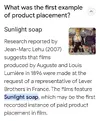Yeah, I've seen garbling, too. In the old analog format, you could actually see the in band CC data bouncing around at the very top of the screen. With digital TV, that became a text stream inside the channel.
In both formats, if the radio transmission wasn't strong enough or got hit by interference, the CC text will barf. In digital TV, if the audio is going in or out or the video is periodically blocking, it's likely that the CC text will be fully garbled.
In the US, it is law for any broadcast TV to include a CC stream for the deaf. I don't know if dedicated cable stations are required since they don't fall under broadcast law, but it is encouraged for them to include CC, and most do.
Live news broadcasts and sporting events have a person typing out what is said. This could be on a regular keyboard, but I've heard they tend to use a special phonetic type setup and a computer translates that into standard English in real time (similar to a legal courtroom setup). This allows words to be typed much faster than a regular keyboard. Sometimes the computer doesn't understand and will garble a word or two. Sometimes the person mis-types something and that can be garbled.
With technology improving, speech to text can be an alternative if the computer is fast enough. If people slur their words or run two words together fast enough, the computer will get confused and garble the text. (This often happens on slower smart phones.) As AI gets better and more prominent, a computer can conceptually follow what is being said. If a word gets garbled, it could try and figure out what that word should be based on a complex spell check and sentence analysis. Sometimes that works, sometimes not. Most live news is read off a teleprompter, so in the future an AI might have access to that script for reference and use it for auto correcting garbled words at the source. Most everything in a sporting event is off the cuff, so a teleprompter couldn't be used to augment an AI's STT.
I’ve seen situations where the TV is on mute and the content of closed captioning has nothing to do with what’s on the screen. I was curious if others had seen that.
I don't think I've seen that, but sometimes the person typing gets way behind. That person could be typing the previous news story when the reporters have already moved on to the next. If it's totally off, the wrong CC stream may have been selected for the program.
CC isn't subliminal, so it won't pass messages to viewers.
Advertisements might still use subliminal messages, but this is discouraged by the industry... but who knows if they actually follow it or not. Subliminal messages can be whispers in the audio, faint images on the screen, or selective positive and negative images on the screen. This last one is almost always used and is part of the advertising culture. The first two could be used by government agencies to control the population if they have access to the TV control room.
Whistlebowers rarely have access to a TV control room to send a message. Most people don't watch TV with CC on, so that's not a very good way of trying to send a message out to the mass population. The people in the TV control room would also wonder what they're doing and try to stop them. If it's broadcast TV in the US, the FCC might fine a station for literally going "off script" that badly.
I've seen some documentaries about the spy world. In WW2, public radio messages would often contain certain keywords that could be referenced to a codebook. These would often be spoken during news and weather. Messages could be passed that way. Some spy agencies set up a dedicated radio station for their agents to listen in on. Without the code book to translate, it sounds like nonsense.
Using CC to pass messages to agents in the field by modifying existing text streams in pre-recorded TV shows and movies isn't recommended. The counter-agencies also have access to these streams and will know somthing is up if a CC stream suddenly changes. It's better to stick to live events where the script isn't known in this case (like the WW2 example).

 Product placement - Wikipedia.
Product placement - Wikipedia.